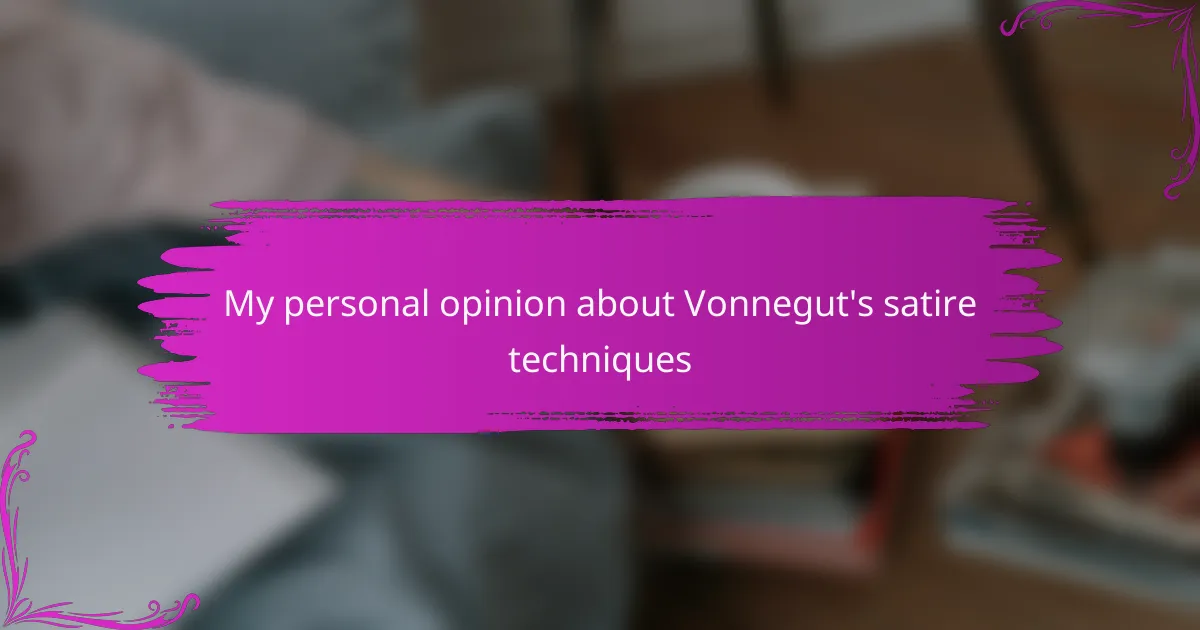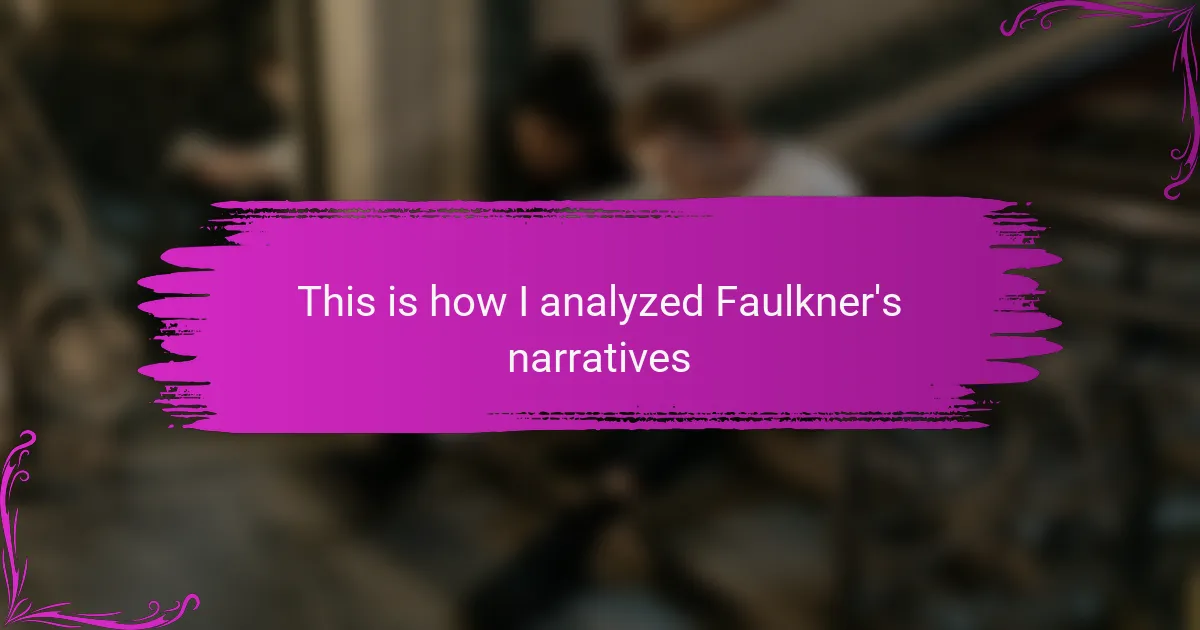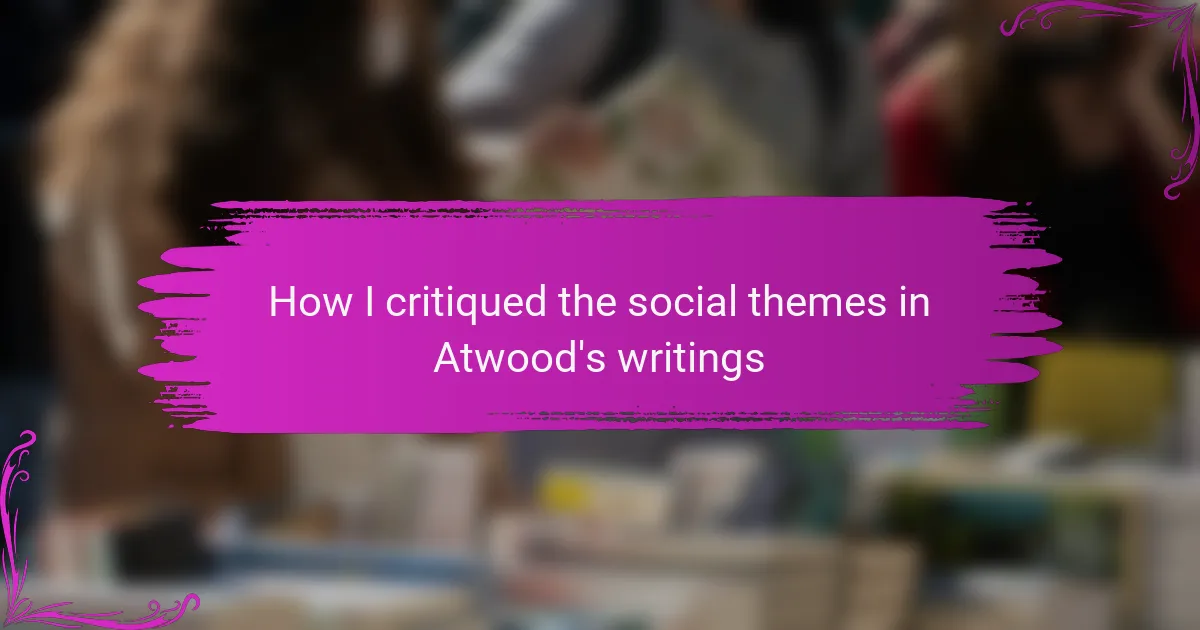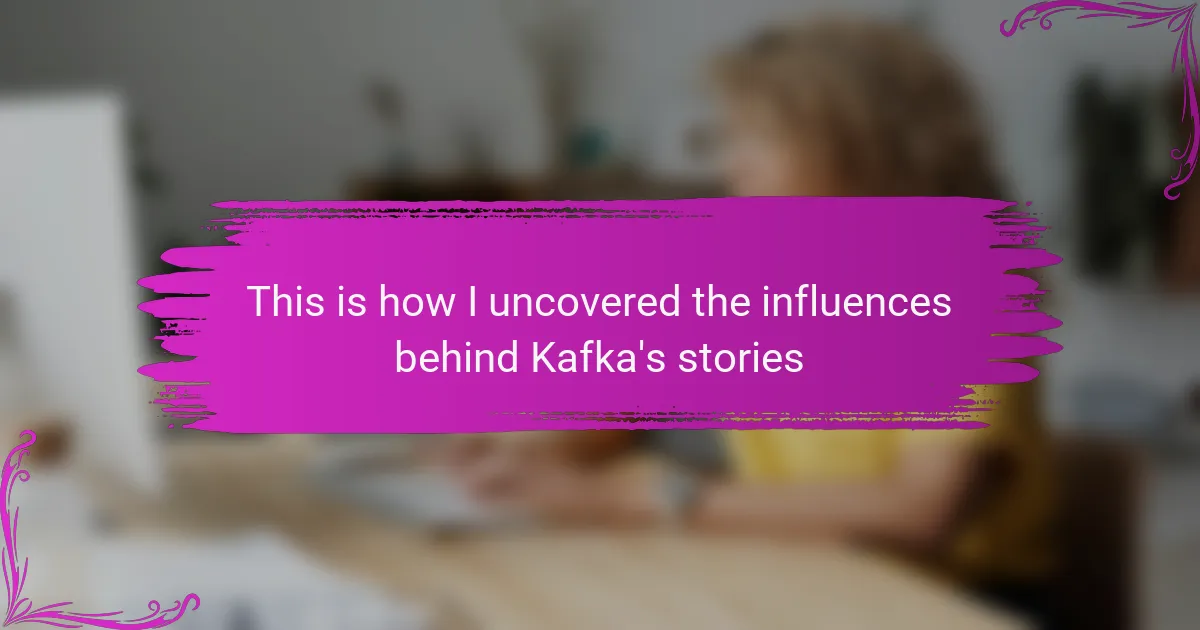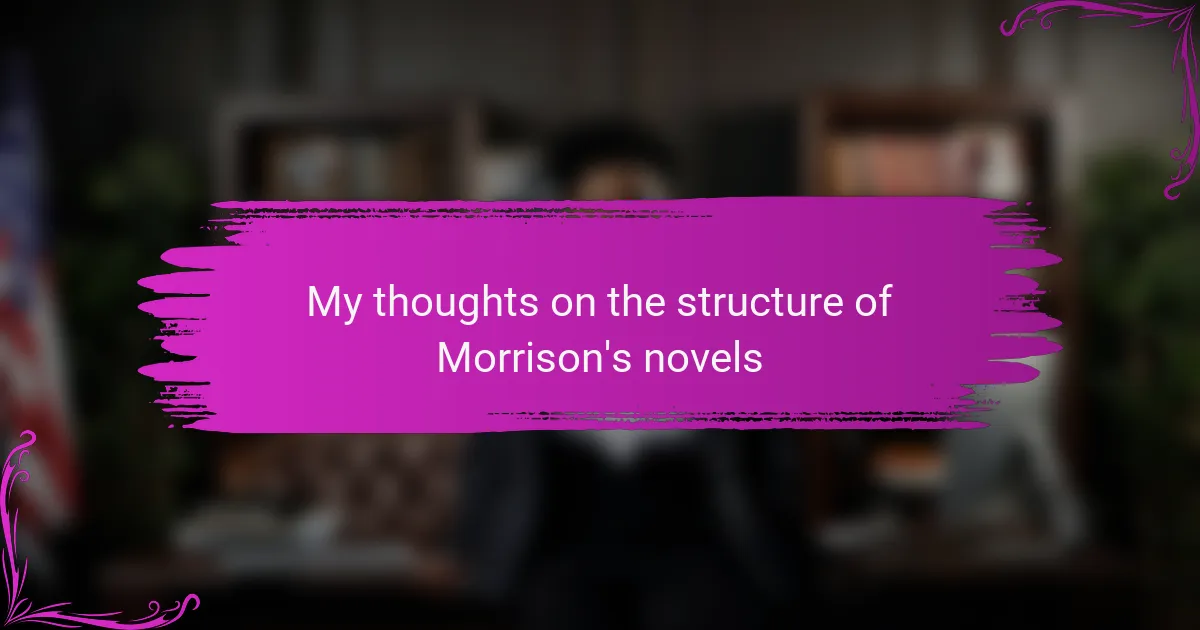Key takeaways
- Satire in literature critiques society and highlights flaws through techniques like exaggeration, irony, and absurdity, as exemplified in Kurt Vonnegut’s works.
- In education, satire fosters critical thinking, promotes dialogue on complex issues, and encourages empathy by presenting harsh realities in an accessible manner.
- Vonnegut’s unique blend of humor and existential themes invites readers to reflect on significant societal and philosophical questions, leaving a lasting impact.
- His innovative techniques, such as dark humor and non-linear narratives, challenge conventional perspectives, prompting deeper introspection and analysis of real-life situations.
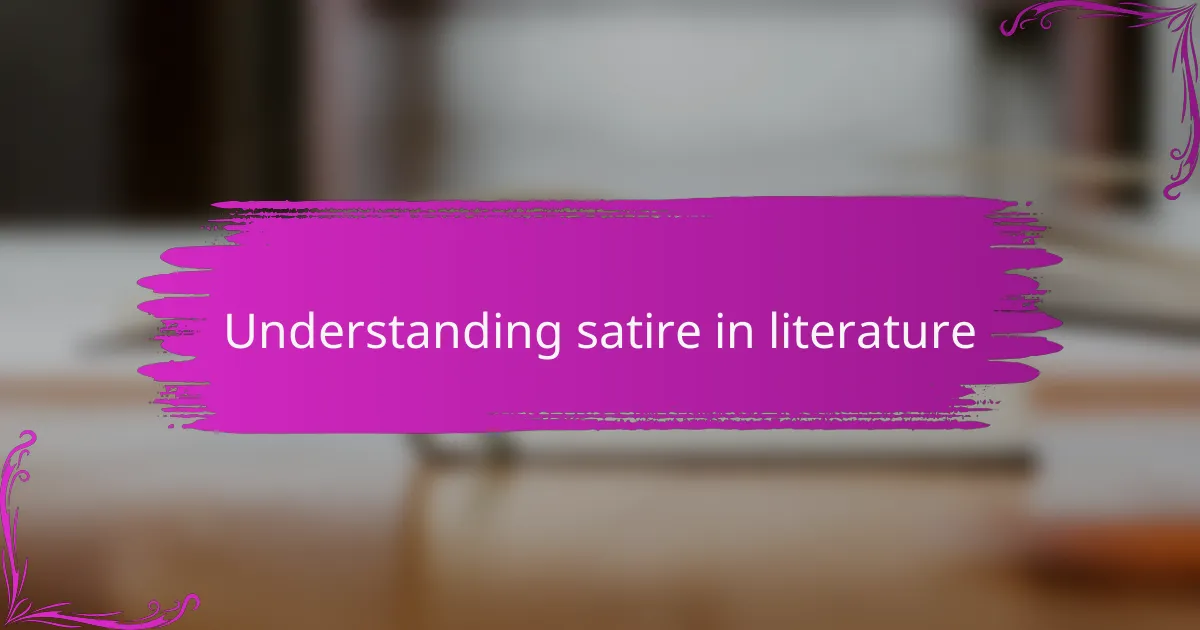
Understanding satire in literature
Satire in literature serves as a powerful tool to critique society and expose its flaws. Kurt Vonnegut, for example, masterfully intertwines humor with sharp social commentary, offering readers a lens through which to examine deep-seated issues. When I first encountered his work, I was struck by how his clever wit masked serious critiques, which made me reflect on my own perspectives.
In understanding satire, it’s helpful to recognize its key elements, as they reveal the techniques authors use to convey their messages:
- Exaggeration: Amplifying characteristics or situations to absurd levels to highlight their flaws.
- Irony: Presenting contradictions between expectations and reality, often to underscore hypocrisy.
- Parody: Imitating styles or genres to ridicule them, inviting readers to question their validity.
- Juxtaposition: Placing contrasting ideas close together to emphasize their differences and provoke thought.
- Absurdity: Utilizing illogical or nonsensical scenarios to challenge conventional reasoning.
Reflecting on these techniques can deepen our appreciation for Vonnegut’s unique approach, inviting us to question our surroundings in ways we might not have considered otherwise.
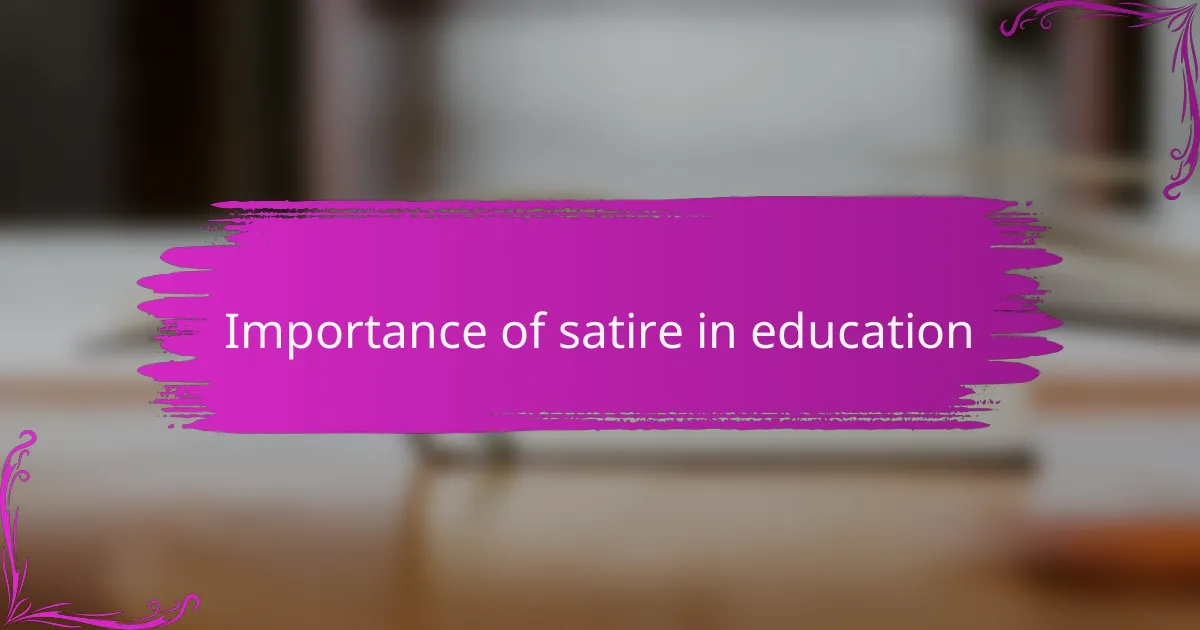
Importance of satire in education
Satire plays a crucial role in education by encouraging critical thinking and promoting open dialogue about societal issues. I vividly remember a classroom discussion sparked by a Vonnegut satire; students were eagerly sharing their opinions on tough subjects like war and consumerism. It made me realize that satire not only entertains but provokes essential conversations that help learners explore complex themes.
Moreover, satire fosters empathy by challenging students to see the world through different perspectives. When I encountered absurd scenarios in a Vonnegut novel, it struck me how humor could soften the blow of harsh realities, making heavy themes more accessible. This method resonates, encouraging students to engage with material emotionally and intellectually.
Finally, incorporating satire into educational settings can ignite creativity and inspire students to think outside the box. I often found myself drawn to crafting my own satirical pieces after reading Vonnegut, as it gave me a voice to express criticisms of society. This process not only nurtures writing skills but also empowers students to become thoughtful participants in discussions about the world around them.
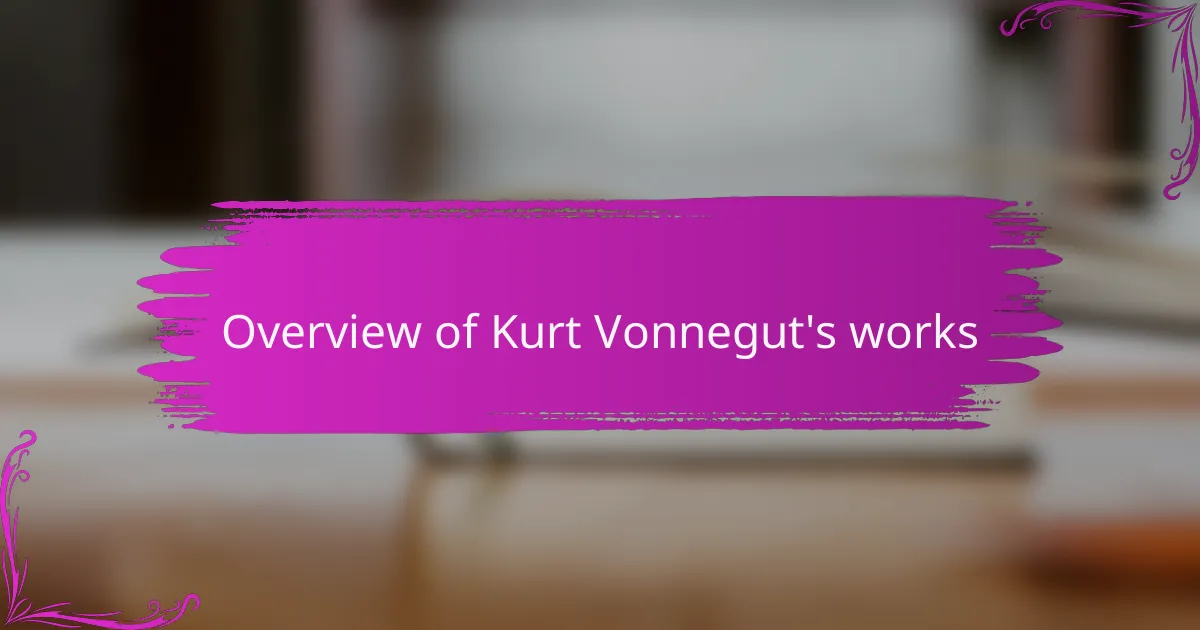
Overview of Kurt Vonnegut’s works
Kurt Vonnegut’s body of work is a fascinating blend of science fiction, satire, and dark humor. His novels, like “Slaughterhouse-Five” and “Cat’s Cradle,” often explore the absurdities of war and the human condition, reflecting his unique perspective shaped by his experiences in World War II. I remember the first time I read “Slaughterhouse-Five”; it struck me how Vonnegut juxtaposed tragedy and humor to shed light on the senselessness of conflict.
What I find particularly compelling is how Vonnegut’s characters often grapple with existential dilemmas, making them relatable and thought-provoking. He had an uncanny ability to weave complex ideas into engaging narratives, often leaving readers to ponder significant philosophical questions long after finishing the book.
| Novel | Themes |
|---|---|
| Slaughterhouse-Five | War, Free Will, Time |
| Cat’s Cradle | Religion, Science, Absurdity |
| Breakfast of Champions | Consumerism, Identity, Free Will |
| Mother Night | Morality, Identity, Duality |
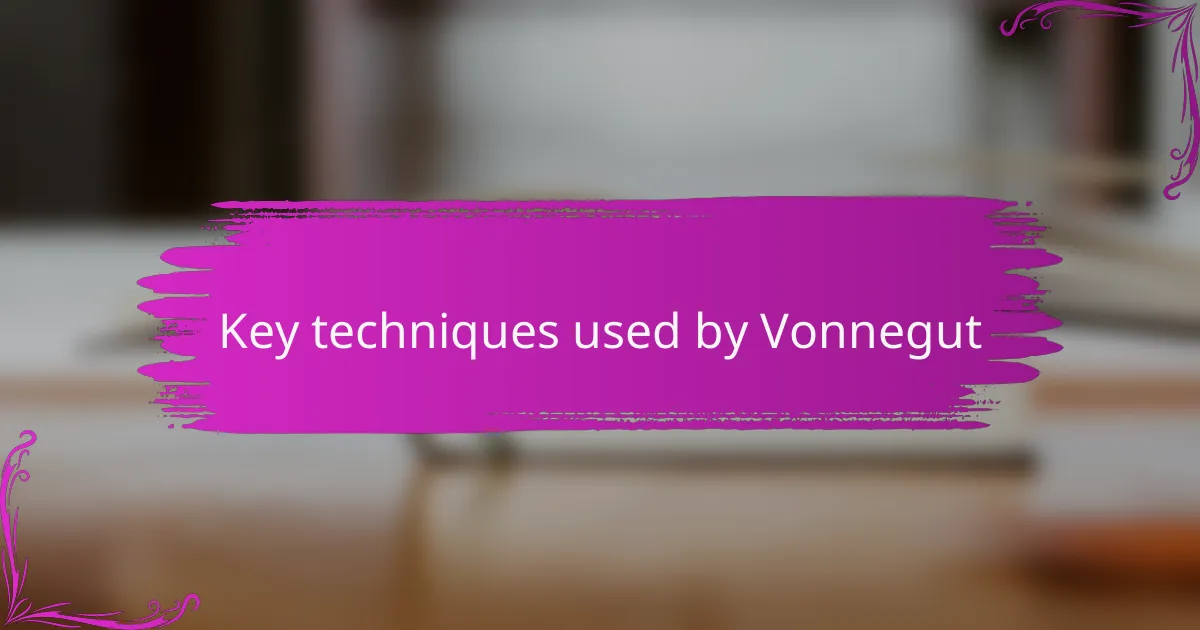
Key techniques used by Vonnegut
Vonnegut employs a variety of techniques that truly set his satire apart. One of the most striking methods is his use of irony, which I find especially powerful. For instance, when characters embark on absurd journeys, their experiences often reveal more about the ridiculousness of societal norms than any straightforward analysis could. It’s like he’s inviting us to laugh at our own folly, and I often reflect on how this contradiction can lead to genuine insight.
Another notable technique is his knack for exaggeration. I remember reading “Cat’s Cradle” and being blown away by how he magnified human behaviors to an outrageous scale. This not only makes the absurdity of our actions clear but also encourages me to look critically at the follies of my surroundings, often with a chuckle. It’s a reminder that sometimes, the truth can be found in the extremes.
Juxtaposition is another powerful tool in Vonnegut’s arsenal. By placing starkly contrasting ideas side by side, he emphasizes the absurdity in everyday life. I recall a moment from “Slaughterhouse-Five” where the juxtaposition of the mundane and the horrific made me question how easily we normalize violence. This technique made me think about the deeper implications of those contrasts, compelling me to reconsider my own perceptions of reality.
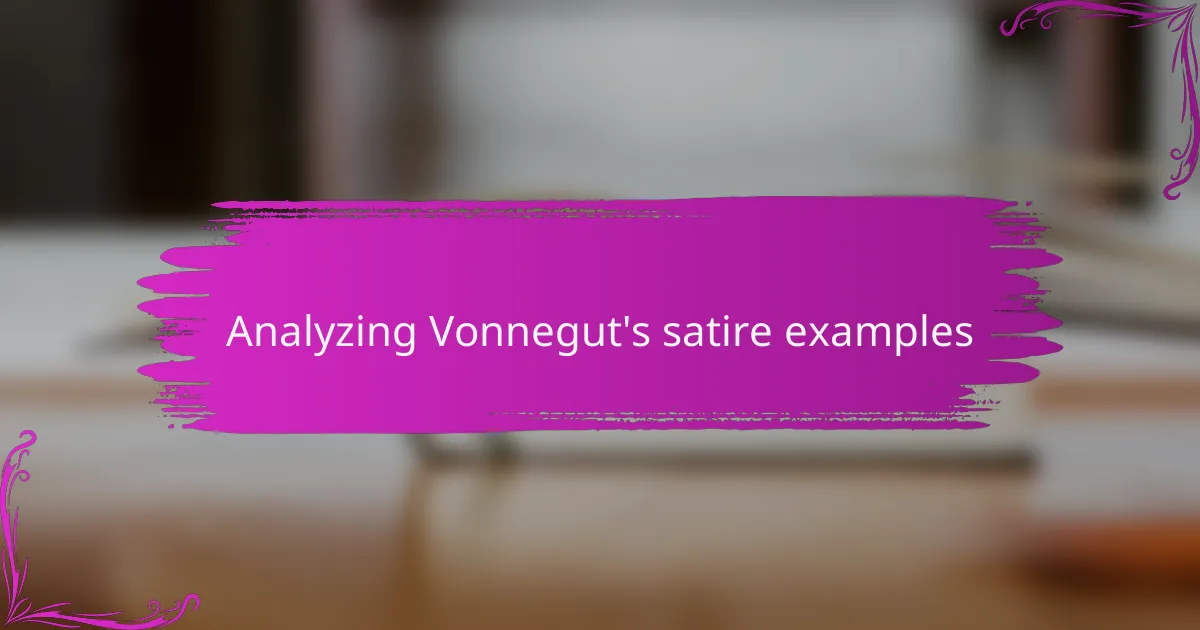
Analyzing Vonnegut’s satire examples
When I delve into Vonnegut’s satire, I often find it striking how he cleverly uses absurdity to highlight the flaws of human nature and society. In works like “Slaughterhouse-Five,” he weaves surreal elements into the narrative, forcing readers to confront uncomfortable truths about war and existence. I remember reading it for the first time and feeling a mixture of horror and humor, which made me reflect more deeply on the absurdity of the situations he portrayed.
Here are some notable techniques Vonnegut employs in his satire:
- Dark Humor: His use of comedy in bleak situations allows us to laugh, even while grappling with serious themes.
- Non-linear Narrative: By breaking traditional storytelling patterns, he mimics the chaos of life and emphasizes the unpredictability of human experiences.
- Social Critique: Vonnegut often critiques American culture, consumerism, and militarism, making readers reconsider the values they accept without question.
- Character Archetypes: His exaggerated characters often represent broader societal flaws, making it easier for readers to identify and analyze these issues.
- Absurd Situations: The bizarre scenarios he creates encourage readers to reflect on the irrationality of real-life situations, prompting a deeper understanding of our realities.

Personal insights on Vonnegut’s impact
Vonnegut’s unique approach to satire has profoundly influenced my understanding of both literature and life. When I first encountered “Slaughterhouse-Five,” I was struck by his ability to intertwine humor with deep existential themes; it made me laugh while simultaneously prompting me to reflect on the absurdities of war. This blend of satire and poignancy left a lasting imprint on my perspective, highlighting the power of literature to tackle serious issues with wit.
Reflecting on Vonnegut’s impact, I believe his techniques resonate with readers because they encourage critical thinking. He strips away the facade of civilization, making us confront uncomfortable truths about society. I recall sharing his work with friends, and witnessing their realization that satire can serve as a mirror to our own follies and injustices.
- Satire as a tool for social critique
- Humor used to address serious themes
- Impact of absurdity on readers’ perceptions
- Encouragement of critical thinking through storytelling
- Personal investigations of morality and ethics in his work
